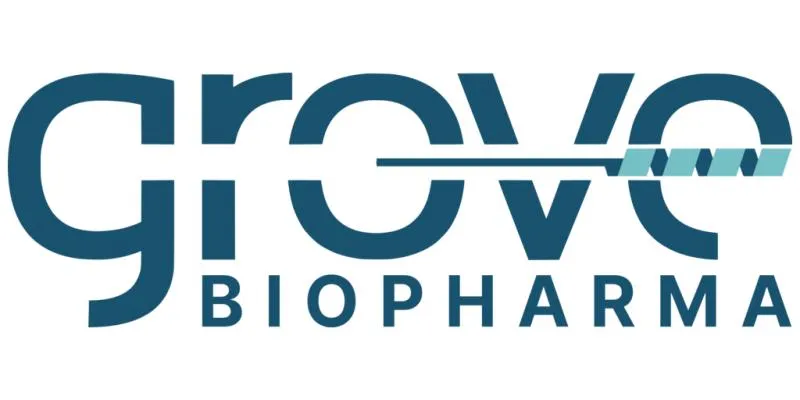
Grove Biopharma to Showcase Breakthrough Bionic Biologics™ at ACS Fall 2025 Symposium on Materials Biology
Grove Biopharma, a private biotechnology company advancing an innovative therapeutic approach it calls Bionic Biologics™, announced that it will present updates on its research at the upcoming American Chemical Society (ACS) Fall 2025 Meeting, scheduled to take place from August 17–21, 2025, in Washington, D.C.. The company’s participation underscores its role as a pioneer in the emerging intersection of materials science, polymer chemistry, and therapeutic design, an area increasingly referred to as “materials biology.”
The specific symposium in which Grove Biopharma will be featured, “Materials Biology: Precision Macromolecules for Probing and Perturbing Cellular Processes,” is slated for Monday, August 18, 2025. This scientific session will convene leading researchers to discuss how synthetic polymers, glycomimetic materials, engineered proteins, and peptides can be harnessed to study, manipulate, and ultimately treat human disease.
For Grove Biopharma, the event is an opportunity to showcase the company’s Bionic Biologics™ platform, a cutting-edge therapeutic strategy that combines synthetic chemistry, biologics design, and computational power to tackle disease targets once considered undruggable.
The Rise of Materials Biology: A New Paradigm for Drug Discovery
The ACS Fall Meeting has long served as a venue for bringing together chemists, biologists, engineers, and clinicians to highlight breakthroughs in translational science. The 2025 symposium on materials biology reflects a growing recognition that polymer chemistry and materials design are increasingly central to biomedical innovation.
As Nathan Gianneschi, Ph.D., Scientific Founder of Grove Biopharma and Professor at Northwestern University, explained:
“This symposium spotlights how advances in modern polymer chemistry and materials science are informing our understanding of biology. By designing synthetic polymers that can precisely interact with cells and proteins at the same scale as natural biomolecules, we are opening new pathways to study and influence complex cellular processes. This emerging field, what we call ‘materials biology’, is focused on the role of synthetic precision macromolecules and nanomaterials in understanding the natural world.”
At its core, materials biology seeks to go beyond the limitations of natural biomolecules by designing synthetic counterparts that can perform equivalent—or even enhanced—functions. For decades, researchers have understood that nature operates with exquisite precision at the molecular level. Proteins fold into specific conformations, peptides signal within tightly controlled pathways, and carbohydrates dictate cellular interactions. Yet replicating or modulating these mechanisms with therapeutic intent has often proven challenging.
Traditional drug discovery has centered on small molecules, typically under 1,000 Daltons in size, prized for their oral bioavailability and straightforward manufacturing. In parallel, the past 30 years have seen the rise of biologics—large, protein-based therapeutics such as monoclonal antibodies and recombinant enzymes—which have revolutionized treatment of cancer, autoimmune conditions, and rare diseases.
But many diseases remain beyond the reach of either class. Intracellular protein-protein interactions, complex misfolded protein aggregates in neurodegeneration, and stubborn oncogenic drivers have historically resisted both small molecule inhibitors and traditional antibody therapies. Materials biology proposes a third option—fully synthetic, yet biomimetic, molecules designed to operate at the protein scale.
Grove Biopharma’s Bionic Biologics™: Integrating Chemistry, Biology, and Computation
At the center of Grove Biopharma’s innovation is its Bionic Biologics™ platform. The concept is deceptively simple but technically complex: to design, synthesize, and optimize fully synthetic molecules that function like proteins—capable of binding, modulating, or degrading disease-associated intracellular targets.
Paul Bertin, Ph.D., Co-Founder, President, and Chief Technology Officer of Grove Biopharma, highlighted the vision:
“At Grove, we are pioneering Bionic Biologics—a new class of therapeutics that integrates biologic and synthetic design, accelerated by computation, to develop molecules capable of selectively inhibiting or degrading even the most challenging intracellular targets. By integrating protein and peptide engineering, precision polymer chemistry and medicinal chemistry, we can create fully synthetic, cell-penetrant, protein-scale molecules to address complex protein-scale problems. We see the potential for Bionic Biologics in oncology and neurodegenerative diseases, offering a novel alternative to existing approaches.”

Unlike antibodies, which generally cannot cross cell membranes, Bionic Biologics™ are designed to be cell-permeable, enabling them to reach intracellular targets. Unlike small molecules, they can be engineered at much larger sizes and complexity, opening the door to tackling large, flat, or dynamic protein interfaces that defy traditional drug-binding logic.
A key enabler of this approach is precision polymer chemistry. By synthesizing polymers with exact chain lengths, side-group placements, and chemical functionalities, Grove’s scientists can produce macromolecules that mimic protein folding and binding specificity. This is coupled with computational modeling that guides design choices, predicts interactions, and accelerates optimization cycles.
The result is a platform that aims to bridge the gap between biologics and small molecules, potentially unlocking entirely new therapeutic categories.
Applications in Oncology and Neurodegeneration
Grove Biopharma’s research focus currently emphasizes oncology and neurodegenerative diseases, two areas with urgent unmet medical need.
Oncology
Cancer remains the quintessential “difficult-to-drug” disease space. While kinase inhibitors, checkpoint inhibitors, and CAR-T therapies have expanded the therapeutic arsenal, many tumors remain resistant or relapse. In particular, oncogenic transcription factors and protein-protein interactions have long been identified as critical drivers of malignancy—but they are notoriously difficult to inhibit with either small molecules or antibodies.
Bionic Biologics™ molecules, by contrast, can be engineered to bind directly to these challenging interfaces, potentially blocking oncogenic signaling at its root. Beyond inhibition, Grove’s platform may also enable targeted degradation of pathogenic proteins, harnessing the principle of PROTAC-like strategies but with fully synthetic, protein-scale molecules.
Neurodegenerative Diseases
Conditions such as Alzheimer’s, Parkinson’s, and amyotrophic lateral sclerosis (ALS) are defined by toxic protein aggregates that disrupt normal cellular function. Despite decades of research, most therapeutic approaches have been hampered by an inability to selectively target and dismantle these aggregates inside neurons.
Here, Grove Biopharma believes its synthetic macromolecules could prove uniquely effective. Designed for cell penetration, high specificity, and customizable degradation mechanisms, Bionic Biologics™ could intervene directly in the molecular pathology of neurodegeneration, clearing or modulating proteins like tau, alpha-synuclein, or TDP-43.
The Convergence of Disciplines: Materials Science Meets Biology
What makes Grove Biopharma’s approach distinctive is its deeply interdisciplinary nature. The company operates at the intersection of:
- Polymer Chemistry – Designing synthetic chains with controlled architectures.
- Peptide and Protein Engineering – Mimicking and extending biological function.
- Medicinal Chemistry – Optimizing for pharmacological properties.
- Computational Biology – Accelerating design with predictive modeling.
This convergence is reflective of broader trends across the biotech landscape, where traditional silos between chemistry and biology are dissolving. Increasingly, the most promising therapeutic platforms are those that borrow principles from multiple disciplines to overcome entrenched bottlenecks.
As Dr. Gianneschi noted, synthetic precision macromolecules allow researchers to “play at the same scale” as natural proteins—unlocking the potential not just to observe biology, but to actively re-engineer it for therapeutic benefit.
Positioning Within the Biotech Landscape
While Grove Biopharma remains a private company, its Bionic Biologics™ platform positions it within several of the most active domains of biotech investment and R&D:
- Targeted Protein Degradation (TPD): Companies like Arvinas and Nurix have pioneered the PROTAC space, demonstrating investor appetite for modalities that go beyond inhibition to degradation. Grove’s fully synthetic approach could represent a next-generation TPD platform.
- Synthetic Biology & Protein Mimicry: Firms developing synthetic antibodies, macrocycles, and peptidomimetics are seeking to bridge the small molecule–biologics divide. Grove’s molecules are distinct in being fully synthetic and protein-scale, which could differentiate them in both functionality and manufacturability.
- Oncology & Neurodegeneration: These two therapeutic areas remain among the largest global markets, with oncology alone projected to exceed $400 billion annually by the 2030s. Companies that can access previously intractable targets stand to gain significant clinical and commercial traction.
Grove Biopharma’s Role in Shaping Materials Biology
By presenting at the ACS Fall 2025 Meeting, Grove Biopharma is aligning itself not only with fellow biotech innovators but also with materials scientists and chemists whose insights may drive the next wave of therapeutic breakthroughs. The symposium itself reflects a recognition that the future of medicine may hinge as much on synthetic materials as on natural biology.
For Grove, the event is more than a scientific update—it is an opportunity to define the narrative around Bionic Biologics™ as a distinct therapeutic class. By coining and championing this term, the company signals its ambition to lead the development of synthetic, protein-scale therapeutics as a recognized category alongside small molecules and biologics.
The announcement of Grove Biopharma’s participation at the ACS Fall 2025 Symposium on Materials Biology highlights both the company’s scientific momentum and the growing convergence of chemistry, biology, and computation in drug discovery. With its Bionic Biologics™ platform, Grove is pioneering a bold therapeutic vision: creating fully synthetic, protein-scale molecules capable of penetrating cells and tackling intracellular targets once deemed untouchable.
If successful, the company’s work could open entirely new frontiers in oncology and neurodegeneration, while establishing materials biology as a cornerstone of 21st-century biomedicine.
As the scientific community gathers in Washington, D.C., this August, Grove Biopharma will stand at the forefront of a movement redefining what it means to design medicines—not just as small molecules or biologics, but as synthetic materials engineered to function at the scale of life itself.




